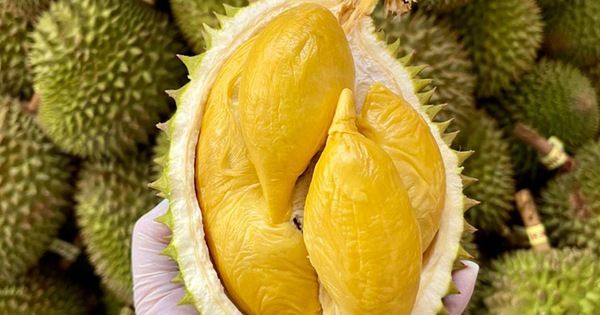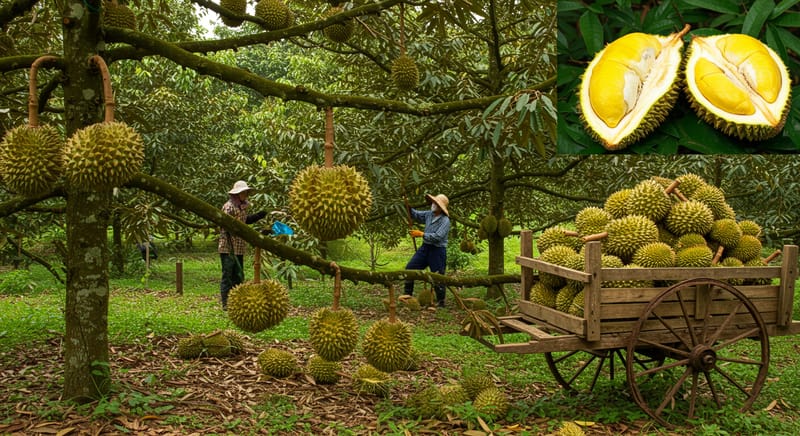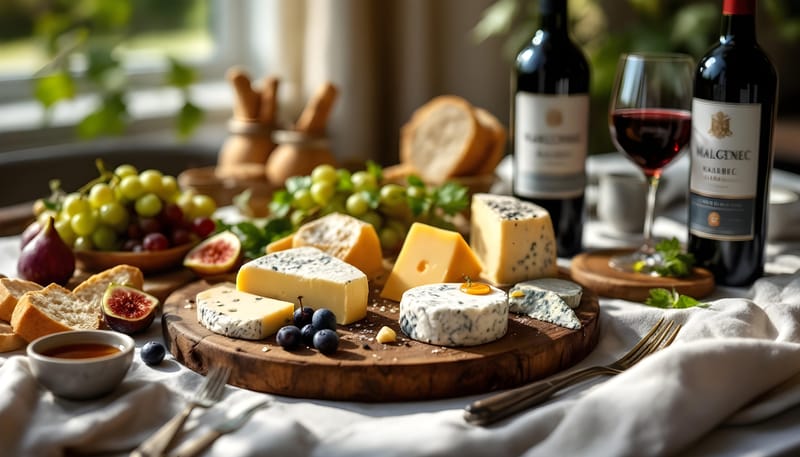Discovering the Exotic and Pungent World of Durian (Sau Rieng): The King of Fruits
Durian, often known as "Sau Rieng" in Vietnamese, is a unique and controversial fruit that instigates diverse reactions due to its robust aroma, flavor profile, and custard-like texture. Originating from Southeast Asia, it's revered as the "King of Fruits" by its aficionados, while some

Durian, often known as "Sau Rieng" in Vietnamese, is a unique and controversial fruit that instigates diverse reactions due to its robust aroma, flavor profile, and custard-like texture. Originating from Southeast Asia, it's revered as the "King of Fruits" by its aficionados, while some find its strong odor repulsive, leading to its ban in various public places and transport systems across Asia.
Physical Attributes
Durian has a spiky outer shell and soft, creamy flesh inside, typically yellow or white. It houses segments, each enveloping large seeds, enveloped by the edible, creamy pulp. Its size can be imposing, often as large as a football, and its spikes make handling a cautious endeavor.
Unique Flavor Profile
The taste of durian is a complex amalgamation of sweet, savory, creamy, and sometimes slightly bitter flavors, which can resemble a blend of creamy custard and onions or garlic to some palates. The consistency is rich and buttery, and it can be consumed fresh, or used in a variety of culinary creations, from savory dishes to desserts like ice creams, cakes, and pastries.
Nutritional Value
Durian is a powerhouse of nutrients, rich in:
- Vitamins: It’s a good source of Vitamin C and B-complex vitamins, especially B6.
- Minerals: Contains substantial amounts of potassium and iron.
- Dietary Fiber: Aids in digestion and helps maintain gut health.
- Healthy Fats: Contains monounsaturated fats which are beneficial for heart health.
However, its high calorie and sugar content make moderation essential, particularly for those managing diabetes or watching their caloric intake.
Culinary Uses
Durian's versatility shines in culinary applications. It's used as the main ingredient in various traditional and modern recipes, such as durian-flavored sweets, pastries, and savory dishes. In Vietnam, “Bánh mì xíu mại durian” is a notable dish, combining durian with meatballs in a tomato-based sauce, showcasing its adaptability in both sweet and savory concoctions.
Cultural Significance
In many Southeast Asian cultures, durian symbolizes abundance and is intertwined with local traditions and folklore. It is often used in traditional medicine due to its believed health benefits, such as anti-aging properties and its ability to improve libido. Its divisive nature has fueled long-standing debates and discussions on its true value and appeal.
Challenges and Sustainability
Durian cultivation poses environmental challenges, including deforestation and loss of wildlife habitats, driven by the increasing demand. Sustainable durian farming practices are crucial to balance economic benefits with ecological preservation. Countries like Malaysia and Thailand are exploring innovative solutions, including eco-friendly farming practices and durian waste utilization for energy production.
Conclusion
Durian, or Sau Rieng, stands as a monumental figure in the fruit kingdom, with its inimitable flavor, aroma, and nutritional benefits. Its divisive nature makes it a fruit that one either loves or avoids, but its influence on culinary arts, culture, and economy in Southeast Asia is undeniable. Sustainable practices in durian cultivation and consumption are paramount to preserve this exotic fruit for future generations while protecting the environmental integrity of its native lands. Whether it’s the rich, creamy texture, the blend of sweet and savory flavors, or its cultural symbolism, durian offers a multifaceted experience that is worth exploring for any curious palate.




